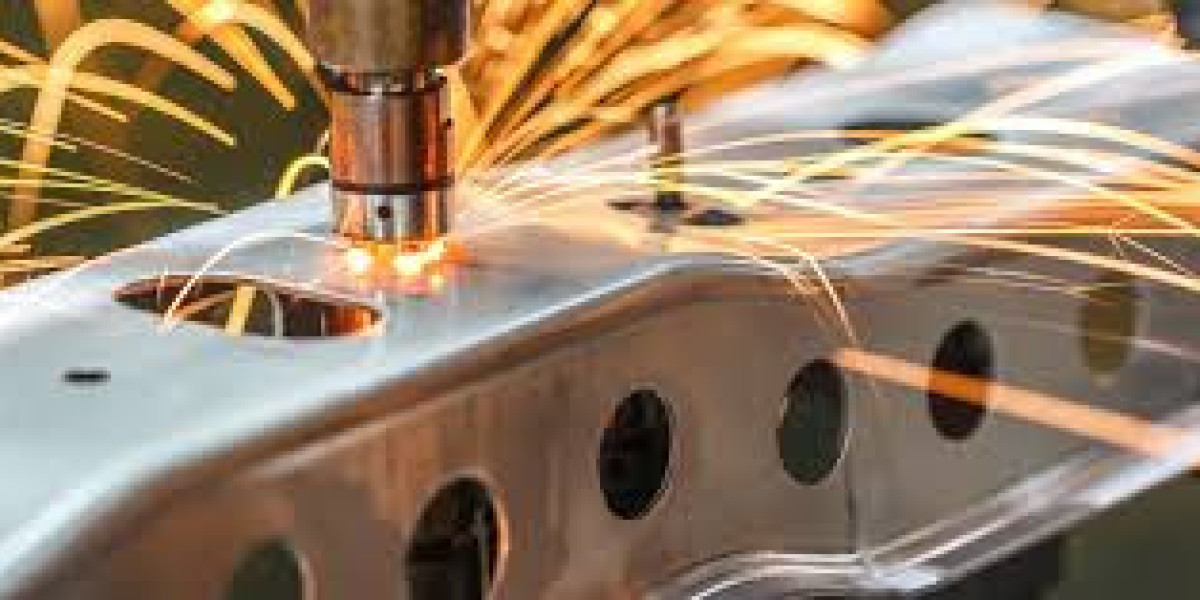Spot welding is one of the most fundamental and widely used techniques in the field of metal fabrication and manufacturing. It is a process that joins two or more metal sheets together by applying heat and pressure at specific points, or “spots,” where the metal surfaces come into contact. This method has become indispensable in industries such as automotive, aerospace, construction, and electronics due to its reliability, speed, and ability to create strong and durable joints.
Understanding the Basics of Spot Welding
Spot welding operates on the simple yet effective principle of resistance heating. When an electric current passes through the metal sheets held between two copper electrodes, resistance at the contact points generates intense localized heat. This heat melts the metal at the joint, and when pressure is applied, the molten area fuses, creating a solid weld upon cooling. The result is a strong, clean connection that requires no filler materials or additional components.
The efficiency of spot welding depends on several factors — the type of metal, its thickness, electrode pressure, and the duration of the current flow. Each element must be precisely controlled to ensure consistent weld quality. Typically, metals like steel, stainless steel, and nickel alloys are most suitable for spot welding because of their good electrical conductivity and thermal properties.
Historical Background and Evolution
Spot welding dates back to the early 20th century when it became a key process in the growing automotive industry. Henry Ford’s assembly lines were among the first to use this method to mass-produce car bodies efficiently. Over time, technological advancements refined the process, introducing automation, computer control, and robotics to enhance precision and productivity.
Today, spot welding machines have evolved from manually operated systems to fully automated robotic arms capable of thousands of welds per hour. These modern systems are vital to industries demanding high-speed production with minimal error margins.
The Process of Spot Welding
The spot welding process involves three main stages:
Clamping:
Two or more metal sheets are clamped between two copper electrodes. These electrodes are shaped to focus the electric current at the desired welding points.Current Flow:
A high electric current passes through the metals for a brief period, generating heat due to electrical resistance. The localized heat melts the metal at the interface of the sheets.Cooling and Solidification:
Once the desired heat is achieved, the current stops, and the molten metal cools under pressure. This forms a strong, fused nugget — the characteristic mark of a successful spot weld.
This entire process happens in fractions of a second, making it ideal for high-volume production environments.
Applications of Spot Welding
Spot welding plays a vital role in many industries. Its versatility and efficiency have made it a preferred choice for creating durable joints without additional materials.
Automotive Industry:
The car manufacturing industry heavily relies on spot welding to join steel sheets that form the vehicle body. A typical automobile may have thousands of spot welds holding its frame and panels together.Aerospace Manufacturing:
In aerospace, spot welding is used for lightweight metal alloys, providing reliable joints for components that require both strength and minimal weight.Electronics and Battery Production:
Spot welding connects metal tabs in batteries and electronic circuits, ensuring strong connections that can withstand heat and vibration.Construction and Appliances:
From metal furniture and frames to home appliances, spot welding ensures robust assembly and clean finishes across a variety of consumer and industrial products.
Types of Spot Welding Machines
There are various types of machines designed for different applications:
Manual Spot Welders: Operated by hand, suitable for small workshops or repair tasks.
Pneumatic Spot Welders: Use air pressure for consistent clamping force, commonly found in medium-scale production lines.
Hydraulic Spot Welders: Provide higher pressure and control, used for thicker materials.
Robotic Spot Welders: Fully automated systems integrated into industrial assembly lines, ensuring speed and precision.
Each machine is designed to match the specific requirements of production, from small-scale repairs to large-scale automated manufacturing.
Material Compatibility and Preparation
Before spot welding, the material surfaces must be clean and free of contaminants such as oil, rust, or dirt. Even small impurities can affect electrical resistance and cause inconsistent welds. Therefore, surface preparation through cleaning or brushing is an essential step.
While spot welding is most efficient with ferrous metals, it can also be applied to non-ferrous materials like aluminum, though this requires specialized equipment and control systems due to aluminum’s higher conductivity and heat dissipation rate.
Automation and Modern Technology
The integration of robotics and digital control systems has revolutionized spot welding in modern manufacturing. Automated spot welding robots, often equipped with sensors and AI-driven quality monitoring systems, ensure consistent welds, precise positioning, and real-time feedback.
These systems reduce human error and improve safety, allowing industries to achieve higher production rates without compromising weld integrity. Moreover, programmable logic controllers (PLCs) allow customization of welding parameters for different materials and product designs.
Safety Measures and Best Practices
Although spot welding is a relatively safe process, adhering to safety measures is essential to protect operators and maintain equipment performance. Proper insulation, protective gloves, face shields, and safety barriers should always be used to prevent electrical and heat-related injuries.
Regular maintenance of electrodes, cables, and cooling systems ensures machine efficiency and longevity. Proper ventilation is also crucial to prevent exposure to fumes that may be released during welding.
Environmental Impact
Spot welding is known for its minimal environmental footprint. Unlike processes that use filler materials or emit harmful gases, it produces very little waste and consumes relatively low energy per weld. The process also supports recycling efforts by allowing easy disassembly of metal structures without damaging the materials.
Manufacturers are now adopting more energy-efficient spot welding systems and eco-friendly electrode materials to align with global sustainability goals.
Future Outlook of Spot Welding
The future of spot welding looks promising with ongoing advancements in automation, materials science, and digital technology. Developments such as adaptive control systems, laser-assisted spot welding, and machine learning integration are enhancing process efficiency and quality control.
As industries continue to seek lightweight materials and sustainable manufacturing solutions, spot welding will remain a cornerstone technology, adaptable to new challenges and innovations.
Final Thoughts
Spot welding stands as one of the most trusted and efficient metal joining techniques in the world. Its ability to deliver strong, reliable, and fast connections has shaped modern manufacturing across countless industries. As technology continues to advance, the process will evolve further, offering even greater precision, efficiency, and sustainability. Whether in automotive production lines, aerospace applications, or consumer goods manufacturing, spot welding remains the invisible force holding our engineered world together.







